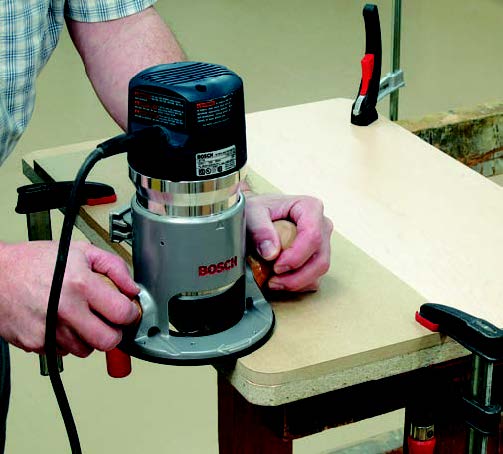
I am considering getting a low end/cost shaper table rather then getting a 1/2″ router and a table to mount it on. Since the low-end shapers have collets for 1/2″- shank router bits…plus the benefit of being able to use shapers…doesn’t this make sense. Cost is comparable. $450 for shaper.
Michael Dresdner: As is often the case, it’s about speed. Shapers typically run at 7,000 to 10,000 rpm, while routers typically run at 22,000 to 25,000 rpm. The cutting speed you want is dependent on the diameter of the cutter or bit. Larger shaper cutters (and oversize router bits, like panel raisers) require slower speeds, while small router bits need higher speeds to do the job. The simple answer to your question is: it depends on what type of cutters you will be using. Run a bit too slow for its size and you will get a poor quality cut, or you will have to feed the wood through very slowly to make up for the slow speed. Run a cutter too fast and it will burn the wood and dull the cutter. A shaper is a good alternative if you are using large diameter cutters or bits, but not if you mostly run small diameter bits.
Rob Johnstone: Charlie Self wrote a very nice article on just this subject in the March/April 2002 Woodworker’s Journal. His advice centered around the cost of shaper cutters (which gets expensive if you gather a large selection) and what sort of work you do most often. If you do a ton of raised panel doors and custom molding … then the shaper is the clear deal. If you do work more typical of the average hobby-guy, then Charlie opted for the router table and a good sized router. As you may expect, it is a bit more complicated when you look at it in depth, but this conclusion was where Charlie hung his hat.
Ellis Walentine: Unless I miss my guess, a $450 shaper won’t run the big “pancake” cutters you need for truly efficient panel-raising cutters, so it won’t offer you a whole lot more capability than a big router in a table. If you’re willing (and financially disposed) to move up to a heavier-duty shaper, with at least a 3/4″ arbor, you can start getting into some of the bigger and taller cutters that make this machine the next step up from the router for molding tasks.





